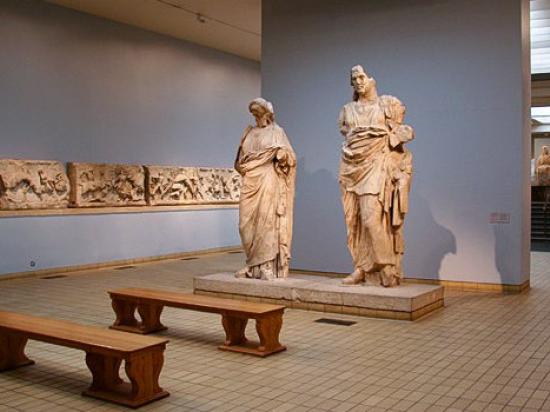The Mausoleum of Halicarnassus
You will probably travel back in time and understand, why the - let us call it tomb stone - of a relatively unimportant carian king, a subject of the Persian Achaemenid Empire - became the namesake of all future funerary momunments.
Truly hidden somewhere up behind the Marina of today's Bodrum lies the remnants of a once-glorious testament to love, power, and architectural prowess - the Mausoleum of the past's Halicarnassus.
Built in the 4th century BCE, this monumental tomb stands as a beacon of ancient craftsmanship and human ambition, captivating the imagination of historians, archaeologists, and travelers alike.
Commissioned by Artemisia II of Caria in honor of her husband and brother, Mausolos, the Mausoleum was designed to be the final resting place for the satrap and queen. It was a structure of grandeur and significance, embodying the fusion of Greek and Anatolian architectural styles.
The Mausoleum of Halicarnassus was a sight to behold. Rising over 45 meters into the sky, it featured a base adorned with intricate friezes and sculptures, depicting scenes from Greek mythology and the life of Mausolos and Artemisia. Atop this base stood a stepped pyramid supporting a colonnade of Ionic columns and a monumental chariot sculpture, further accentuating its majesty.
The Mausoleum was not merely a tomb but a monument to enduring love and power. Artemisia spared no expense in its construction, employing renowned architects and craftsmen to ensure its magnificence. Despite the passage of centuries, its legacy endures as a testament to the bond between Mausolos and Artemisia and their contributions to the cultural tapestry of antiquity.
Although the Mausoleum of Halicarnassus met its demise through earthquakes and plundering, its influence reverberates through the annals of history. Its architectural elements and artistic motifs inspired countless imitations and adaptations, leaving an indelible mark on subsequent generations of builders and artisans.
Today, while only fragments and reconstructions remain of the original Mausoleum, efforts are underway to preserve and protect its legacy. The site has been designated as a UNESCO World Heritage Site, ensuring its significance is recognized and celebrated for generations to come. Some fragments and the statues of Mausolos and Artemisia are displayed today in the British Museum.
If you want to know more about Bodrum, you are welcome to check out these travel guide here.


